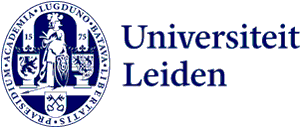445 zoekresultaten voor “telescopes and instrumentation” in de Publieke website
-
De geur van het universum
Voormalig promovendus Cameron Mackie krijgt niet één, maar twee proefschriftprijzen voor zijn proefschrift over het aromatische universum. Door zijn werk kunnen we binnenkort misschien een virtueel ‘snuifje’ van de ruimte nemen. ‘Deze moleculen in de ruimte ruiken waarschijnlijk als een grote houtsk…
-
Astronomen zien ster met stofschijf die nog steeds groeit
Een internationaal team van sterrenkundigen waaronder ook Leidse wetenschappers publiceert het beeld van een jonge ster met een omringende stofschijf die nog steeds gevoerd wordt vanuit de omgeving. Het verschijnsel rond de ster SU Aur kan verklaren waarom zoveel exoplaneten niet netjes uitgelijnd zijn…
-
Astronoom Jos de Boer krijgt Chesneauprijs voor beste proefschrift
Astronoom Jos de Boer heeft in Nice de Chesneauprijs in ontvangst genomen voor zijn onderzoek naar zogeheten protoplanetaire schijven. De prijs wordt toegekend aan het beste sterrenkundige proefschrift op het gebied van hoge ruimtelijke resolutie. ‘Ik zie het als een goede kans om over mijn onderzoek…
-
Leidse planetenexperts willen zeven ‘aardes’ verder onderzoeken
Astronomen hebben zeven aardachtige planeten ontdekt rondom een dwergster in onze Melkweg. Drie van deze planeten bevinden zich in de leefbare zone van deze ster en kunnen vloeibaar water bevatten. ‘De volgende stap is om de atmosferen te onderzoeken naar aanwijzingen voor leven. In Leiden zijn we expert…
-
Monitoring and detection of nanomaterials in biological media.
How do nanoparticles bioaccumulate and biodistribute in organisms?
-
Lava worlds: characterising atmospheres of impossible nature
Over the last three decades, the discovery of exoplanets has revealed the boundless variety of worlds beyond our own Solar System. Majority of planetary systems contain short-period planets that are larger than Earth but smaller than Neptune.
-
wavefront sensors for direct exoplanet imaging: Theory, simulations and on-sky demonstrations
One of the key limitations of the direct imaging of exoplanets at small angular separations are quasi-static speckles that originate from evolving non-common path aberrations (NCPA) to which the primary adaptive optics system is inherently blind. The main focus of this thesis is the development and…
-
Exploring future multi-messenger Galactic astronomy
For centuries astronomers studied the Universe by collecting light. Nowadays, we are living in times of great technological advancements, which allow us to explore our Universe in a new way - though gravitational wave radiation.
-
Untangling cosmic collisions: a study of particle acceleration and magnetic fields in merging galaxy clusters
On the largest scale, the Universe resembles a cosmic spiderweb. Most galaxies coexist in small groups within the threads of this web. At the nodes of the threads are enormous groups of galaxies forming the largest structures in the universe still held together by gravity: clusters of galaxies.
-
Exploring the magnetic, turbulent Milky Way through radio waves
Promotor: Prof.dr. H. J. A. Röttgering, Co-Promotor: M. Haverkorn
-
Radio galaxies near the epoch of reionisation
This thesis explores the theoretical and observational properties of distant massive galaxies that harbour active black holes in their centres and shine brightly at radio wavelengths.
-
Revealing the nature of new low-frequency radio source populations
It has now been well established that shocks and turbulent motions in the intra-cluster medium (ICM) generated through cluster mergers can produce large-scale synchrotron emission.
-
Protostellar jets and planet-forming disks: Witnessing the formation of Solar System analogues with interferometry
The focus of this thesis is how stars like our Sun and planets like Jupiter, Saturn, and Earth are formed.
-
Op zoek naar een zusje van de aarde
Snellen
-
Sterrenstelsel in het vroege heelal blijkt toch koolstofrijk
In 2015 dacht Jorryt Matthee een extreem ver sterrenstelsel ontdekt te hebben waarin geen elementen zwaarder dan helium aanwezig waren, genaamd CR7. Drie jaar later toont hij via metingen met de ALMA-telescoop aan dat het sterrenstelsel toch koolstof bevat en zelfs in normale concentraties. De American…
-
Astronomen brengen spinrag van kosmisch web in kaart
Een internationaal team van astronomen van onder andere de Leidse Sterrewacht, heeft voor het eerst een stukje van het donkere, kosmisch web in kaart gebracht. Het onderzoek versterkt de hypothese dat het jonge heelal bestond uit enorme aantallen, kleine groepjes pasgevormde sterren. De astronomen publiceren…
-
Astronomen zien schijf rond super-Jupiter waar wellicht manen vormen
Een internationaal team van sterrenkundigen onder Leidse leiding heeft voor het eerst een stofschijf in kaart gebracht rond een jonge super-Jupiter, een hemellichaam dat qua grote en eigenschappen tussen een reuzenplaneet en bruine dwerg in ligt. De infraroodstraling die van de schijf afkomt, doet vermoeden…
-
Superzware zwarte gaten en krachtige telescopen: nieuwe hoogleraar Joe Hennawi
Maak kennis met de nieuwste hoogleraar van de Sterrewacht Leiden: Joe Hennawi. Hennawi komt uit Santa Barbara, Californië en komt naar Leiden met een ERC Advanced Grant. Hij zal gaan onderzoeken hoe superzware zwarte gaten ontstaan.
-
Geschiedenis
De Oude Sterrewacht heeft een rijke geschiedenis. Op deze pagina vindt u een beknopte versie van de historie die zich in het observatorium heeft afgespeeld.
-
Slice of Science
De eerste foto van een zwart gat en angst meten in je brein? Van 13 t/m 22 mei ontvang je een gratis portie wetenschap bij jouw Domino's pizza: a slice of science.
-
Nieuwe Master Class over sterrenkunde voor scholieren
De eerste editie van een nieuwe reeks sterrenkunde master classes bestaat uit zes lessen en heeft als thema ‘exoplaneten’ - planeten buiten ons zonnestelsel. Zo'n twintig enthousiaste leerlingen van tussen de 11 en 13 jaar oud heeft zich vrijwillig aangemeld voor deze buitenschoolse activiteit. Universe…
-
Tien jaar Life Science and Technology
Op 9 september 2009 viert de opleiding Life Science and Technology (LS&T) haar tienjarig bestaan.
-
De Volkskrant: Leidse experimenten bevestigen theorie Verlinde
Leidse astronomen zien in verre sterrenstelsels formules terug, die aansluiten bij de opzienbarende nieuwe zwaartekrachttheorie van hun Amsterdamse collega Erik Verlinde.
-
Firearms and violence in Europe–A systematic review
Firearms and violence in Europe–A systematic review by Katharina Krüsselmann, Pauline Aarten, Marieke Liem
-
 Bram van Dijk
Bram van DijkWiskunde en Natuurwetenschappen
-
 Céline Zaepffel
Céline ZaepffelFaculteit der Geesteswetenschappen
-
 Feifei Wang
Feifei WangWiskunde en Natuurwetenschappen
-
 Joeri Lammerts
Joeri LammertsFaculteit Governance and Global Affairs
-
Leidse Sterrewacht
Met elke ontdekking geeft het heelal een fractie van zijn geheimen prijs: de verste melkwegstelsels en quasars, de atmosferen van exo-planeten, metingen aan donkere materie, complexe moleculen in de ruimte. Dit is waar de wetenschappers van de Sterrewacht Leiden samen met hun collega’s in en buiten…
-
Een extreem grote telescoop hier ver ver vandaan
Op een bergtop, middenin een kurkdroge woestijn in een uithoek van Chili, is nu nog niks te zien. “Gebruik je verbeelding”, zegt sterrenkundige Ewine van Dishoeck tegen haar onderzoeksgroep uit Leiden en Garching die met haar meereisde naar deze afgelegen plek. “Want in mei dit jaar wordt hier de eerste…
-
Hubble en Sagan Fellowships voor Leidse sterrenkundigen Matteo Brogi en Jayne Birkby
De Leidse sterrenkundige Matteo Brogi heeft een Hubble Fellowship toegekend gekregen van NASA en het Space Telescope Science Institute (STScI). Jayne Birkby van de Leidse Sterrewacht heeft een 2014 Carl Sagan Exoplanet Postdoctoral Fellowship ontvangen.
-
Ruimtetelescoop Gaia ziet Rosetta-komeet
Komeet 67P/Churyumov-Gerasimenko, gefotografeerd door de Europese ruimtetelescoop Gaia. (ESA/Gaia/DPAC)
-
Hoera, Life Science and Technology bestaat alweer 15 jaar
De opleiding Life Science and Technology (LST) stond 9 september 2014 met een feestelijk gebakje stil bij haar 15 jarig bestaan. Het gaat bijzonder goed met de opleiding. Er zijn veel eerstejaars studenten en LST masterstudenten vinden of vóór hun diploma-uitreiking of er vlak na een goede baan.
-
De lancering van een nieuw tijdperk: Leiden en de James Webb telescoop (deel II)
Na 25 jaar is het deze december eindelijk zo ver: de lancering van de lang verwachte James Webb ruimtetelescoop. Leidse astronomen kijken vol spanning mee: niet alleen waren zij betrokken bij de bouw van belangrijke instrumenten aan boord, de telescoop zal ook vele nieuwe geheimen van het heelal onthullen,…
-
Quantitative pharmacology approaches to inform treatment strategies against tuberculosis
Tuberculosis (TB) is associated with 1.5 million deaths annually. There is a need exists to optimize both current as well as novel antibiotic combination treatment strategies to improve the effectiveness and safety of treatments against TB.
-
Mysterieuze rimpelingen racen door planeetvormende schijf
Een internationaal team van astronomen, waaronder Leidenaar Christian Ginski, heeft nog nooit eerder waargenomen structuren ontdekt in een stofschijf rond een nabije ster. Publicatie in Nature op 8 oktober.
-
Afgekapt, gekanteld, ijzerrijk zonnestelsel gewoner dan gedacht
Ons afgekapte, gekantelde, aluminium- en ijzerrijke zonnestelsel blijkt gewoner dan gedacht. Dat stelt sterrenkundige Simon Portegies Zwart op basis van simulaties en berekeningen met een supercomputer. Er zouden in onze Melkweg ongeveer 36.000 vergelijkbare zonnestelsels te vinden moeten zijn.
-
Magnetische velden gedetecteerd nabij het zwarte gat in het Melkwegcentrum
Astronomen, onder wie de Leidse Remo Tilanus, hebben met behulp van de Event Horizon Telescope voor het eerst magnetische velden waargenomen net buiten de waarnemingshorizon van het superzware zwarte gat in het centrum van onze Melkweg. Publicatie in Science.
-
Veel media-aandacht voor detectie neutrino met telescoop diep in de zee
Wetenschappers hebben een neutrino ontdekt met de hoogste energie ooit gemeten. Leidse natuurkundigen Maarten de Jong en Dorothea Samtleben werkten mee aan dit project, waarover afgelopen week te lezen was in alle kranten en op alle online media.
-
 Paul Wouters
Paul WoutersFaculteit der Sociale Wetenschappen
-
 Frank Baas
Frank BaasFaculteit Geneeskunde
-
 Jian Wang
Jian WangFaculteit der Sociale Wetenschappen
-
Astronomen brengen magnetische velden zwart gat M87* in beeld
Het Event Horizon Telescope (EHT)-team, dat de allereerste foto van een zwart gat maakte, heeft vandaag een nieuwe afbeelding gepresenteerd. De afbeelding toont hetzelfde zwarte gat in gepolariseerd licht. Het is voor het eerst dat het astronomen is gelukt om polarisatie – een kenmerk van magnetische…
-
 Cornelis Hokke
Cornelis HokkeFaculteit Geneeskunde
-
 Bart Roep
Bart RoepFaculteit Geneeskunde
-
Masterdag: aandacht voor onze masteropleidingen en -specialisaties
Op vrijdag 6 februari is het weer Masterdag in Leiden. Ook de science masters presenteren zich deze middag aan bachelor- en hbo-studenten die een master willen kiezen.
-
Telescopen reflecteren tekeningen via de maan
De Vereniging van Oud-Sterrewachters was te gast bij CAMRAS in Dwingeloo. Voor hun jaarlijkse bijeenkomst verkenden ze de stad en bezochten ze de radiotelescoop die de vrijwilligersorganisatie CAMRAS beheert. Daarnaast dook het gezelschap in de historie van de radio astronomie en moonbouncing waarbij…
-
Leidse astronomen in astronomiepodcast
Vijf Leidse astronomen zijn te horen in de podcast Astronomy et al. Deze podcast is in september 2016 opgezet door Ricardo Garcia Soto en richt zich op iedereen die geïnteresseerd is in wetenschap.
-
 Oscar Rueda
Oscar RuedaWiskunde en Natuurwetenschappen
-
Spontaneous hospitalization in the immediate aftermath of the Manchester arena bombing
In dit artikel presenteren Andrea Bartolucci en Michele Magni een evidence-based onderzoek naar de spontane opname van slachtoffers en de verdeling van patiënten in de onmiddellijke nasleep van de Manchester Arena Bombing.
